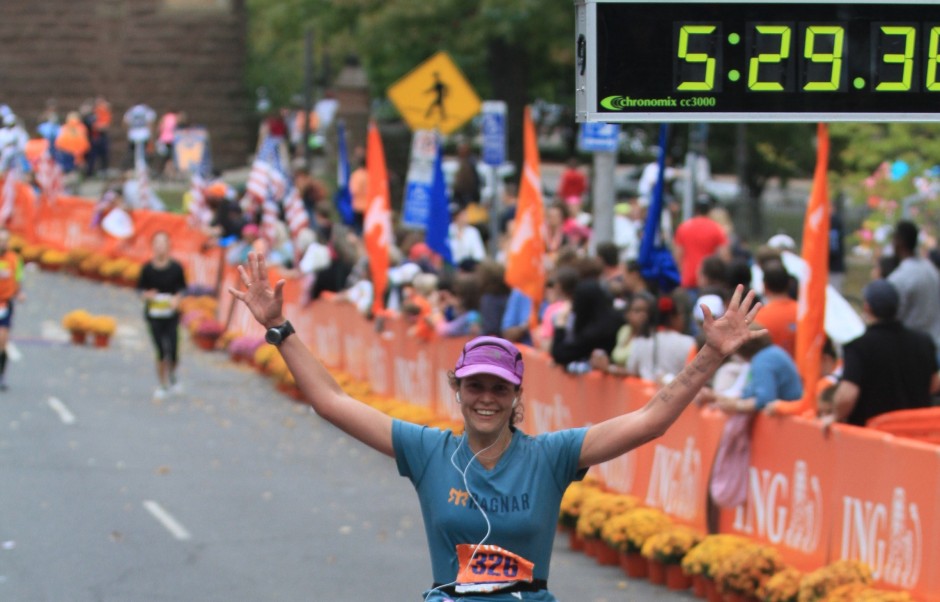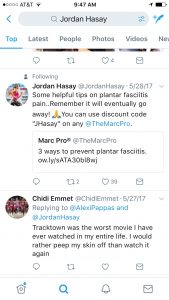I am going to offer up a series of blog posts about my experience dealing with plantar fasciitis for the last year or so. A kind of account of remedies attempted and lessons learned. I get asked how to deal with PF a lot and maybe it will be helpful to have my rather extensive answer in a document somewhere. If this helps anyone deal with this malady, I will be so pleased. But please, dear readers, remember that I am not a (medical) doctor. I can only write from my own experience and what I have learned from reading about and treating this scourge.
I want to share one resource right off the bat. Research is part of my job, of course, and I can research plantar fasciitis just like I research German politics. After reading pretty much everything I could get my hands on, I do have one particular source to recommend. You have to pay for it, but it’s well worth the $20. For me, that is less than one co-pay for a physical therapy appointment. I don’t want to let on how many research hours I spent on the plantar fasciitis project, but suffice it to say, quite a few. At the end of the day, I’d recommend this source, which is basically an e-book. It’s well-written, comprehensive, and backed by scientific research:
https://www.painscience.com/tutorials/plantar-fasciitis.php
If you read that e-book, you don’t really need my blog posts, but sometimes it’s helpful to hear about a particular person’s journey and the e-book is pretty long (not that I am exactly known for brevity…). So, today I’ll give a little bit of my background and some know-your-enemy type information. Next time around, I’ll talk about Front Line Assault Measures.
I dealt with plantar fasciitis for the first time back in 2009 before I even started running. It took a long time – about nine months – but I eventually emerged triumphant. I managed to give myself plantar fasciitis by rocking newborn Rose to sleep while standing barefooted on a hard cement floor in a hot Berlin apartment with no air conditioning. I eventually got rid of it and I was able to start running the following spring. I had a lot of patience and it turns out patience is a critical weapon in this war. But I hadn’t started running yet so I didn’t know what I was losing.
This most recent battle with plantar fasciitis also has its origins in Berlin. Who knew that city would turn out to be so hazardous to your feet? In July 2016, I arrived in Berlin for a month of research with the whole family. We brought everything a family of four could need and I threw in a couple of pairs of running shoes I had used to train for the Vermont City marathon that spring. It took about five runs on Berlin’s cobblestoned streets for the plantar fasciitis to rear its ugly head (foot?) again. For a smart person, I made some pretty idiotic choices. I ran 110 miles that month and kept my 100 mile/month streak alive (excuse me, but whoop-di-fucking-do, that was so worth it – not!). I sought out softer surfaces. I did not buy new shoes or stop running or find some reasonable form of cross-training. Why not? That is a whole other post. Suffice to say, mistakes were made.
 Great running. Awful surfaces.
Great running. Awful surfaces.
When I got home, I got new shoes and managed to get the PF under control, but it flared up again in September and things crashed badly in October. PF is often multi-factorial and in retrospect, I can read that clearly. The 2009 bout that was so awful points to a potential underlying tendency to severe and tenacious PF. In summer 2016 I was coming off spring training for Vermont City and everyone is more vulnerable to everything post-marathon. The month of running in bad shoes on cobblestones. The perhaps-overly-aggressive mileage increases to prepare for the Philadelphia marathon in the fall. The over-eager attempts to return to running in January and February. Take away any of that and things would maybe not have been as bad, but it’s impossible to know. In any case, I again lost nine months of running to plantar faciitis, but this time, I knew what I was losing.
What is plantar fasciitis? Generally speaking, it’s inflammation of the plantar fascia, which is a ligament that runs along the bottom of your foot, connecting your heel bone to your toes. If it gets irritated, you will feel pain in your heel. Classically, the pain will be worst when you first stand up in the morning. You can develop plantar fasciitis in lots of ways, but most commonly from being on your feet a lot, especially in inadequately supportive shoes. PF is the bane of athletes, but also soldiers and nurses and grocery clerks and cooks. This is a good overview and much shorter than the e-book (also this is free).
http://www.webmd.com/a-to-z-guides/tc/plantar-fasciitis-topic-overview#1
Despite the above claim that PF is inflammation of the plantar fascia, it might not be inflammation at all. Doctors and researchers aren’t exactly sure what is going on with this problem beyond that it’s very common and even famous people get it:
https://well.blogs.nytimes.com/2013/02/20/no-consensus-on-a-common-cause-of-foot-pain/?_r=0
Since that article was written, Jordan Hasay and Galen Rupp also came down with plantar fasciitis and both have recovered. Rupp won bronze in the marathon at the Rio Olympics and was second at Boston. Hasay was third at Boston. So, plantar fasciitis is something you can beat. Here’s what Jordan has to say about it – the important message here is not the particular doo-dad she is advertising, but that plantar fasciitis eventually goes away. Different remedies work for different people and patience and persistence are your very best weapons. Next time around, front line assault, or what to do right away.


